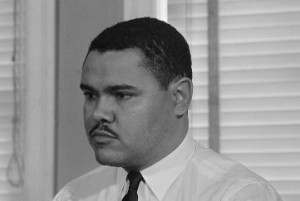R.I.P. Lawrence Guyot
 I was saddened to learn that the great Lawrence Guyot died on Friday. If you don’t recognize his name, it’s a real shame because he had a HUGE impact on securing voting rights and was a critical leader in the Black freedom movement.
I was saddened to learn that the great Lawrence Guyot died on Friday. If you don’t recognize his name, it’s a real shame because he had a HUGE impact on securing voting rights and was a critical leader in the Black freedom movement.
I learned about Mr. Guyot in reading about the 1964 Freedom Summer. He was considered one of the “Big Eight” in the Student Nonviolent Coordinating Committee (SNCC) in Mississippi. Others in that group included Bob Moses, James Forman, Lafayette Surney, Willie Peacock, among others. After joining SNCC in 1962, Lawrence Guyot became director of the 1964 Freedom Summer Project in Hattiesburg, Miss. He was also the founding chairman of the Mississippi Freedom Democratic Party.
Mr. Guyot was arrested and jailed several times during his struggle for social justice. In its obituary, the Washington Post highlights one particularly brutal incident in Mr. Guyot’s life:
In one of the bloodiest chapters of the civil rights movement in Mississippi, Mr. Guyot and others, including Fannie Lou Hamer, were arrested by law enforcement officials in 1963. They were severely beaten in a Winona, Miss., jail.
In testimony after the beating, Mr. Guyot said he had gashes on his head, was bleeding from his nose and mouth, and was bruised from his chest to his lower legs. Later, he recalled in a 2007 interview with The Washington Post, he was taken from his cell and shown to a group of white men gathered behind the jail.
“Now you know what he looks like,” he said the jailer told the crowd. “You can take care of him whenever you find him.”
The door to his jail cell was left unlocked, but Mr. Guyot knew that if he attempted to escape, he would probably be killed.
The Winona incident is seminal in the history of the Civil Rights Movement. Lawrence Guyot had heard that Fannie Lou Hamer and several others had been arrested and jailed in Winona, Mississippi. He and several others went to the jail to inquire as to their condition and to post bond for their release. Instead of receiving information, Sheriff Patridge ordered Guyot “to get out of Winona and stay gone.” He turned to leave and was knocked to the ground by another officer for failing to say “sir” to Patridge. Chana Kai Lee (1999) describes part of Guyot’s Winona experience in her biography of Fannie Lou Hamer:
Soon the others joined in beating Guyot inside the sheriff’s office before locking him up in a cell. Guyot’s harrowing experience included being transported to nearby Carroll County where he was brutally beaten by a group of Ku Klux Klan. Afterward he was returned to Winona, where his coworkers were still being detained.
During Guyots’ detention at the Winona jail, Hamer and others caught one glimpse of him when Hamer convinced the jailer to leave open a large door because the heat had become unbearable inside what she later described as a “dungeon.” Hamer was particularly disturbed by Guyot’s appearance because he lacked his characteristic beaming grin. According to Hamer, “Guyot looked like he was in bad shape and it was on my nerve, too, because that was the first time I had seen him…not smiling.” Later, the group would discover the reasons for Guyot’s grim look. He had been “forcefully disrobed” before being beaten. But there was more. As Hamer put it in a 1968 interview, his sadistic assailants had also “taken a piece of paper and tried to burn Guyot’s private off.” He was detained until some time after the larger group was released. When he was reunited with his fellow civil rights activists, the big bruises all across his face and body did more to describe his experiences than could mere words (p.53-54).
Thank you Mr. Guyot for your work, your legacy lives on in all of us, Rest in Power!
